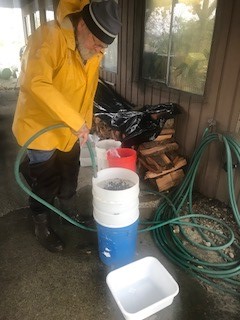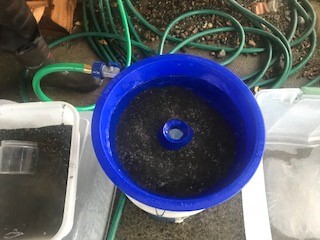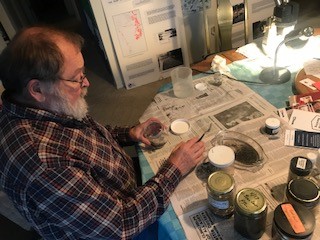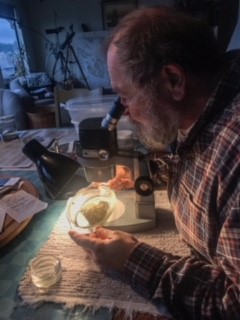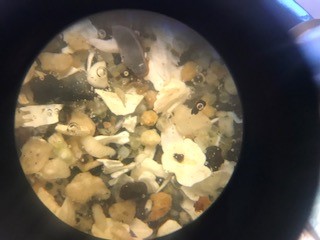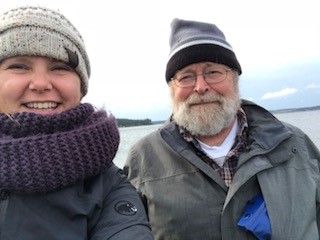Post by Jess Newley, Marine Program Assistant
Last week I got to hang out with the forage fish guru himself, Dan Pentilla.
Since starting with Friends as the marine program assistant a month ago, I have been busy out on the beaches around San Juan and Lopez islands, collecting sand samples to help us document Pacific Sand Lance (PSL) spawning beaches in the area. The methods for these beach surveys are pretty simple, but are perfected with an art and a good eye for the preferred substrates and locations of possible spawning grounds.
Dan Penttila, a retired WDFW biologist, knows these methods better than anyone – he created them. Dan has been studying forage fish in the Salish Sea since the 1980s. When I heard I got to spend the day with the man himself, you bet I was excited and took advantage of every second with his knowledge and expertise around.
After going over some background information, and drilling him with every forage fish question I ever had, we headed to a known PSL spawning beach on Whidbey Island. We collected our samples, talked techniques and strategies and then headed back to the house to complete the process of separating what we hope are some eggs from the sand.
WDFW is now using what is known as the “blue bowl method”, or vortex method for separating the sand from the eggs. I had read a lot about the methods, so it was nice have the chance to see them in person and do them myself. (Caption for blue bowl pic)
The methods have slightly changed over the years, going from using the winnowing method first created by Dan, to what is now called the vortex method. Both methods begin with the same first step, which is to put the sample through a series of sieves, layered over a bucket.
This is Dan spraying the samples down with a garden hose. Each time the sand is collected below and then put through the next smaller sieve, until all the condensed material collected from the last .5mm sieve is ready for the blue bowl.
As Dan explained to me, this process is a lot like gold panning. The vortex method uses water turbulence, swirling around the bowl over the sand in a circular motion to stir up the lighter material and send it down into the bucket below. This leaves all of the heavier sand and rock particles behind and gives you a much smaller sample to analyze under the microscope.
After each of the samples from the beach have gone through these steps, the condensed samples are put into formalin and are ready for lab analysis.
Luckily Dan’s house is complete with microscopes and a laboratory setup, so we were able to do the analysis right away. And we found eggs! It is nearly impossible to see a PSL egg with your naked eye, and also difficult to tell them apart from other grains of sand under the microscope, but of course with a bit of help from Dan, voila!
Thanks Dan!!
Click here to learn more about this program.
-
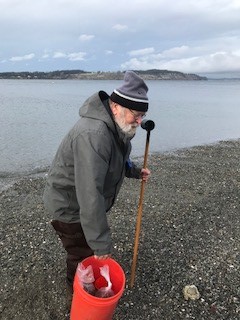
-

-

WDFW is now using what is known as the “blue bowl method”, or vortex method forseparating the sand from the eggs. -

-

-

-

